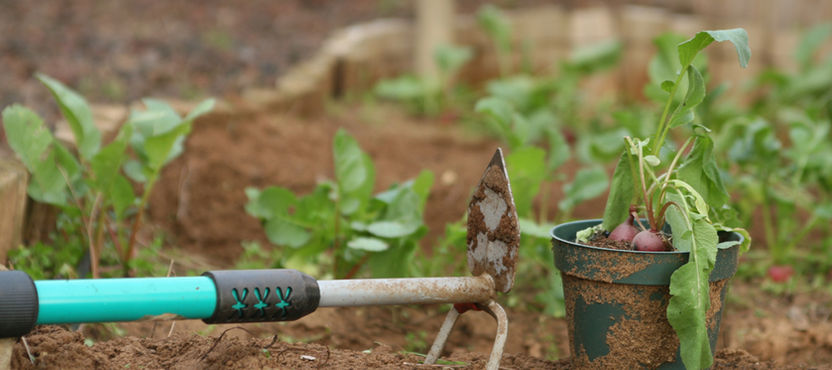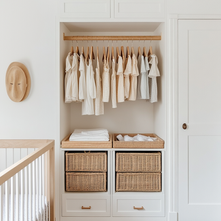How to Effortlessly Make Your Rooms Flow
- Beril Yilmaz

- Jan 3
- 5 min read
Creating a cohesive and harmonious living space is one of the most rewarding aspects of interior design. When you enter a home, the first thing that often captures your attention is the overall flow of the rooms. Is there a sense of connection, or do the rooms feel disjointed, each telling its own story? The art of achieving flow isn’t just about making things look good; it’s about crafting an atmosphere that invites you in and makes you feel at home.
In this guide, you will discover practical tips on making your rooms flow seamlessly, enhancing the individual charm of each space while connecting them beautifully.
With insights and a bit of creativity, you can transform your living spaces into a beautifully interconnected haven. Whether you’re redecorating or designing your dream home, understanding how to create flow will change the way you experience your surroundings.
1. Make Rooms Flow: Understand the Concept of Flow

To truly bring your home to life, you must first understand what "flow" means in interior design. Flow refers to the visual and functional connection between different rooms. Achieving this creates a sense of cohesiveness that guides a visitor’s eye smoothly from one space to another.
Consider your layout's rhythm. Does your furniture invite movement or create barriers? Assess how you navigate from room to room. For example, an open pathway from the living room to the dining area allows for easy transition, making each space feel integrated. Flow is also about the way colors, styles, and designs interact in each room, creating a harmonious composition.
2. Make Rooms Flow: The Role of Color Schemes

Your choice of colors significantly impacts how rooms relate to one another. A well-planned color scheme can visually tie your spaces together. For instance, if you paint the living room a warm beige, using a slightly darker shade of beige in the adjacent dining room creates continuity while still allowing each room to shine.
Start by selecting a primary color and a few complementary shades. This approach does not require identical colors but should involve a visible relationship among them. For instance, pairing a soft blue in the living room with a muted grey in the dining area—both could be paired with light wood accents—will help maintain a sense of flow.
3. Make Rooms Flow: Mix and Match Patterns Wisely

Patterns add interest to your home, but too many contrasting designs can make a space feel chaotic. To maintain flow, aim for a balanced ratio of patterns to solids. Choosing a few key patterns that share a common color ensures that each room feels unique yet connected.
For example, using a floral print in one room that shares a base color with striped fabric in another can create visual harmony. Consider how decorative pillows and throws in your living room can reflect similar shades in the adjoining space, fostering a cohesive design language across your home.
4. Make Rooms Flow: Harmonize Furniture Styles

Furniture plays a critical role in creating flow. While varied styles can add character, they can also disrupt continuity. Aim for a few key styles that complement each other. For instance, if your living room features modern furniture with sleek lines, you might incorporate a similar aesthetic in the dining room with a modern glass table or chairs that share a similar color scheme.
Use furniture pieces that echo each other: a velvet sofa paired with velvet dining chairs can create a unique yet cohesive look across spaces. This mindful approach will ensure a seamless progression from one room to the next.
5. Make Rooms Flow: Use Open Spaces Strategically

Open floor plans naturally create a flow between rooms. They foster a visual dialogue between spaces, allowing for smooth transitions. If your layout is more traditional, consider creating openings or removing unnecessary barriers, like bulky furniture.
Using area rugs strategically can define sections within an open space while providing a cohesive look. For example, an area rug that incorporates your color scheme can delineate the living space from the dining area, ensuring they feel distinct yet connected.
6. Make Rooms Flow: Strategic Lighting Choices

Lighting does more than just brighten a room; it establishes the atmosphere and enhances flow. Utilize a layered lighting approach, integrating ambient, task, and accent lighting throughout your home.
Pay attention to how natural light changes throughout the day; use consistent window treatments across rooms to maintain a unified appearance. For example, if you invest in metallic fixtures in one room, consider similar materials in lamps and light fittings throughout your home to reinforce visual flow.
7. Make Rooms Flow: The Art of Transition Spaces

Transition spaces, such as hallways or entryways, are crucial to perceived flow. These areas bridge different rooms, so consider enhancing them for improved movement and connection.
You might use decor that draws eyes toward different spaces. A striking piece of artwork in a hallway can transition viewers from one room to the next. Incorporating colors and styles consistent with the adjoining rooms creates a harmonious look that enhances flow.
8. Make Rooms Flow: Incorporate Personal Touches

Decorating your home allows you to showcase your personality. Personal touches like family photos, collections, or meaningful artworks can warm up a space. The challenge is to ensure these elements do not disrupt flow.
Position similar styles of personal items across your rooms to forge subtle connections. For instance, a gallery wall in the living room can be complemented by a smaller collection in the hallway, effectively echoing themes throughout your home.
9. Make Rooms Flow: Consistency in Accessories

Accessories greatly impact the overall visual flow of a home. Items such as vases, mirrors, and cushions should echo your theme and color palette. A consistent approach to accessories will strengthen connections between rooms.
Frame mirrors that complement the lighting fixtures or upholstery in adjacent spaces. Similarly, using cushion covers of varying sizes but with matching fabric or color can promote continuity and elevate your design choices.
Embracing Effortless Flow

Understanding how to make your rooms flow is a continual journey that creatively enhances your environment. By examining how colors, patterns, furniture, lighting, transition spaces, and personal touches work together, you can create a harmonious home that feels inviting and cohesive.
With attention to detail and a little effort, you'll find that achieving effortless flow is about more than just design; it’s about creating a space that reflects who you are while making it comfortable and welcoming.
FAQ
Q: How can I improve the flow between two small rooms?
A: Use a consistent color palette and shared design elements. Keep furniture arrangements open and fluid to create seamless transitions.
Q: What if I want to use a bold color in one room?
A: Definitely! Incorporate shades of that color in other rooms through accents or décor to maintain a balanced flow.
Q: Should my furniture styles be the same throughout?
A: Not at all! Mixing styles can add interest, but find pieces that share traits—like color or material— to keep flow intact.
Q: How often should I refresh my decor to maintain flow?
A: Regularly updating small elements, such as accessories or artwork, can keep your space lively while preserving established flow.
Transform your home into a flowing masterpiece. At BY Design And Viz, we specialize in crafting harmonious havens tailored to your preferences. Let our expert interior design services help you create a beautiful, inviting space every day.
Ready to make your rooms flow effortlessly? Contact us today to begin your design journey!


































